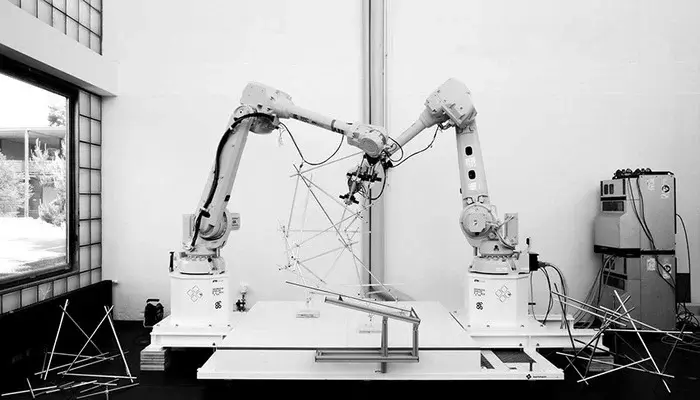List of Top Fabrication Materials to Use in the Construction Industry Today (2025)
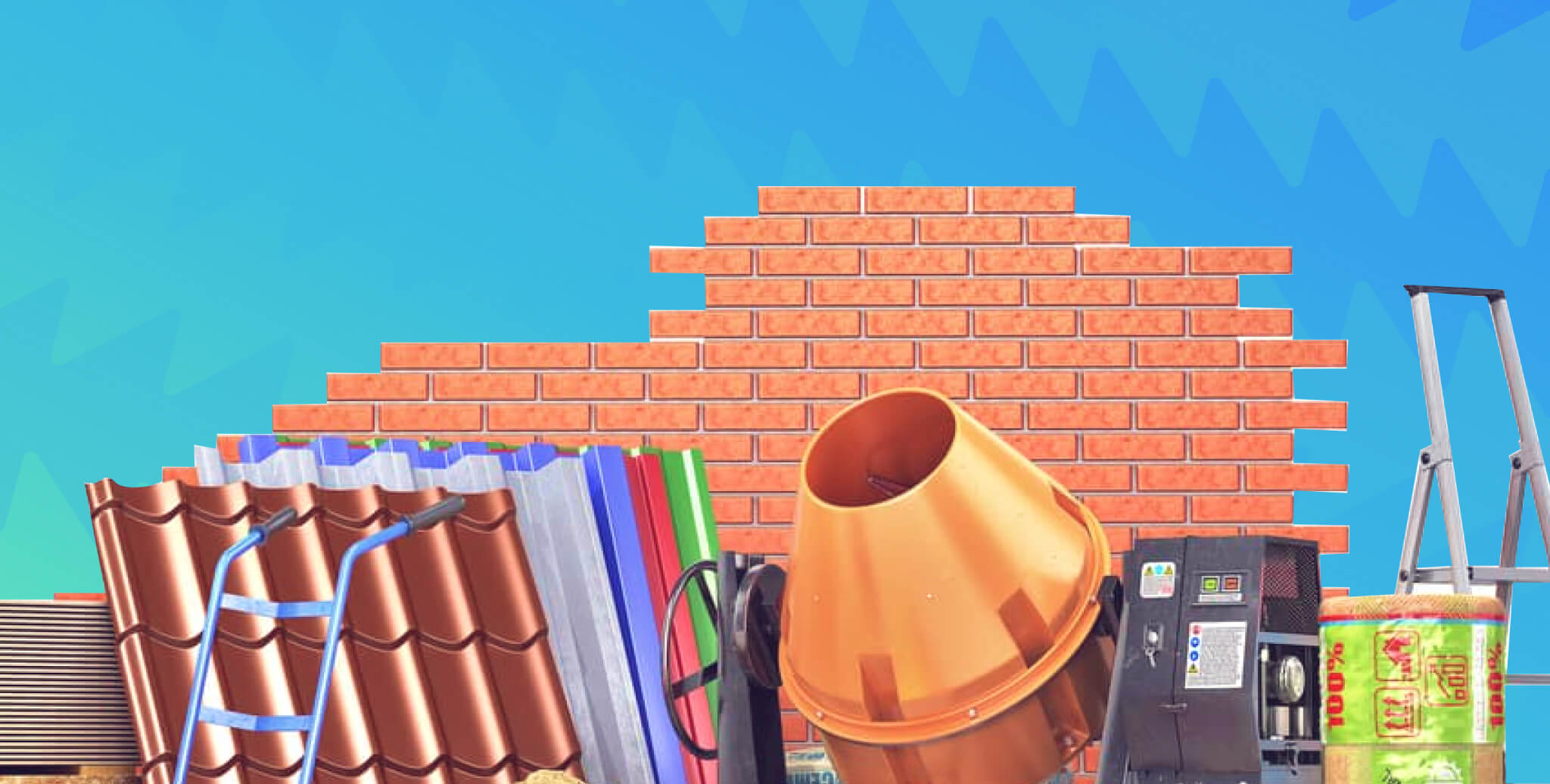
Table of Contents
Fabrication material choice is extremely important when fabricating the desired forms for your building. In this article, we will explore what fabrication is, the types of fabrication processes, some points that you should keep in mind when selecting your fabrication material in construction fabrication, and a list of some of the best fabrication materials in the construction and fabrication market today.
What is Fabrication?
What is Fabricating? In the simplest terms, fabricating a part or product when it comes to construction and fabrication means making it from scratch using raw or semi-finished materials. The process can include designing, stamping, welding, cutting, bending, and assembling. These processes can either be done manually or optimised with the use of Computer-aided Drawing (CAD) that can be programmed into CNC technologies.
These days, fabrication in the construction and fabrication industry involves making components for items such as engines, machines, tools, building systems, and household appliances using materials such as metal, laminates, wood, steel, and other solid surface materials.
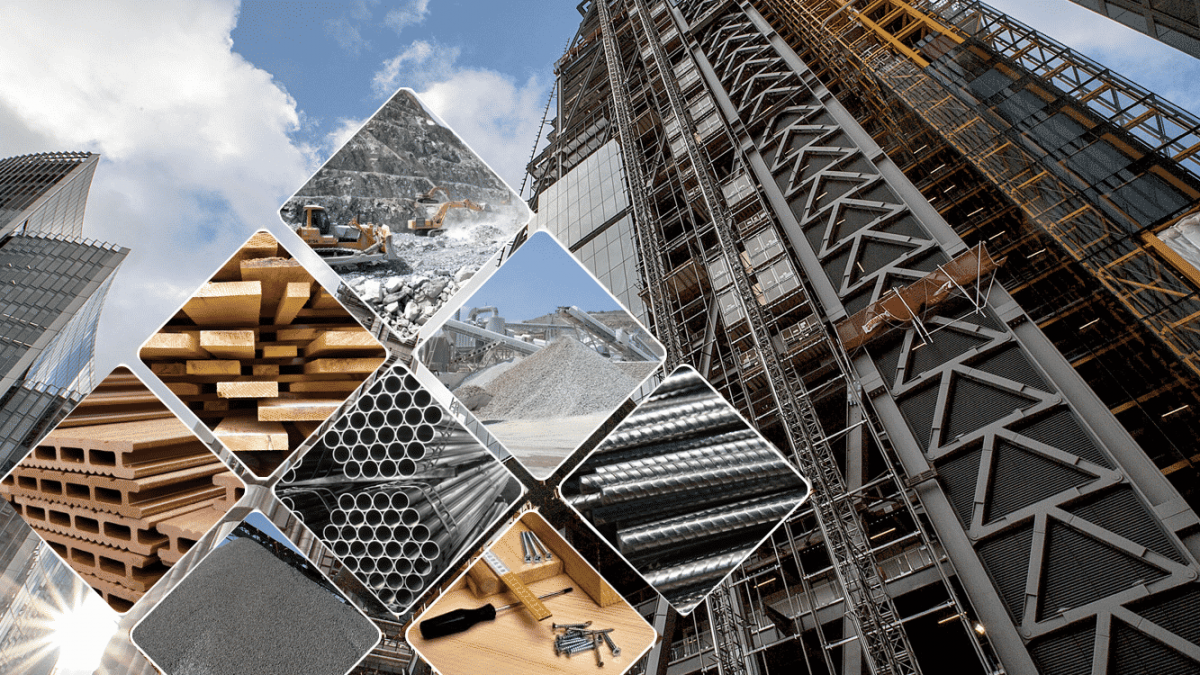
Types of Fabrication Services and Why Is Fabrication in Construction Necessary
Any construction project's foundation largely depends on carefully handling raw materials. This is where fabrication services come into play. You should know the different types of materials for fabrication to use in yur project. Construction and fabrication professionals can ensure they have the necessary resources and know-how to complete their projects by being aware of the many fabrication services available.
Fabrication services have several benefits. Some of them are listed below:
Customisation: Product customisation services can create items that are tailored to a customer's needs. Design and functional freedom are increased for product designers.
Quality control: Strict quality control is often used by fabrication services to ensure that the final product complies with customer requirements and industry standards.
Cut lead time: Custom items can sometimes be delivered more rapidly by fabrication services than by purchasing pre-made goods since they have more control over the production process.
Savings: Purchasing pre-made goods may not always be more affordable than fabricating them. Bulk ordering might be more cost-effective for large-scale projects.
Now that we know what fabricating is and how useful fabrication is, let’s delve into the different types of fabrication used in the construction industry for construction fabrication:
The different types of fabrication used in the construction industry include:
1. Structural steel fabrication:
It is a process of bending, cutting, and moulding steel structures to create beams, columns, and steel members.
2. Metal fabrication:
The method involves different techniques to modify raw metal into a new metal product. For construction and fabrication, manufactured metals can be reinforcement bars, metal sheets, bolts, nuts, anchors, and metal tubings. Other than this, plumbing systems, drainage systems, and HVAC systems also use metal fabrication.
3. Plastic fabrication:
Today, plastic fabrication is popular among manufacturers because of its two main properties, i.e., malleability and cost-effectiveness.
4. Digital fabrication:
Unlike the others on the list, digital fabrication refers to a process of fabrication - rather than the material. Connecting building design to digital fabrication has the potential to change the game, with automated cutting and configuration systems to enable customers’ design choices to be fed directly into the production system.
Architecture firms like Foster + Partners, Zaha Hadid Architects, and Frank O Gehry have turned to shipbuilders and their CAD systems and processes to fabricate large-scale components for buildings.
Key Points when selecting Fabrication Material
When choosing the perfect fabrication material, you should consider the end-product which you’re aiming for and the process involved in achieving that. Other factors that you should consider include:- Cost of the material,
- The durability of the material,
- Availability of the material,
- How you want the finished product to function
- Fabrication timeline,
Finding the perfect construction and fabrication material can therefore be overwhelming unless you know exactly what you’re looking for. Here’s a list to ease your decision process for selecting the best materials for fabrication.
List of Fabrication Materials to Use in the Construction Industry Today
1. Iron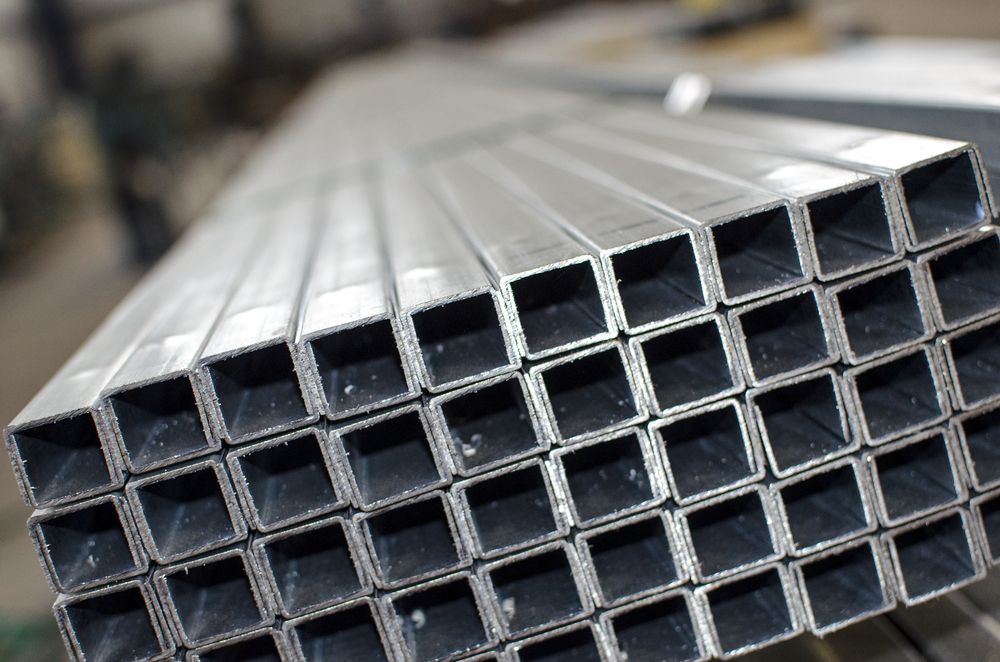
Iron fabrication’s use in the AEC industry is more industrial than ornamental. Examples of its usage include iron railing for staircases, ductwork, stacks or silos, iron rods, etc. Manipulating iron includes processes like bending, forming, rolling, cutting, and punching.
Pros: The advantages of using iron include its long-lasting durability, excellent machinability, and resistance to deformation.
Cons: The main disadvantage of using this fabrication material would be its heavy weight. Another one would be that the material is prone to rust and eventually gets harmed by continued rusting.
2. Steel
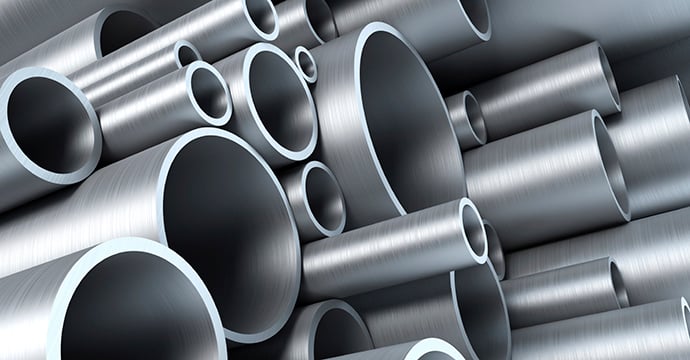
Steel is an alloy of iron and carbon (the higher the carbon content, the stronger the steel). The material is used throughout the Industry, from transportation appliances to mega-structures to entire buildings!
Some examples include bar joists, ladders, grating, skids, universal beams, universal columns, industrial equipment, etc. The steel fabrication process can be broken down into three parts – melting raw materials, mixing melted materials into steel, and forming the desired shape using said steel.
Pros: There are various advantages of using steel for your AEC projects. Some of them include its reliability, industrial behaviour, faster construction, and its elasticity.
Cons: The major disadvantage of using steel is its high maintenance cost.
3. Sheet Metal
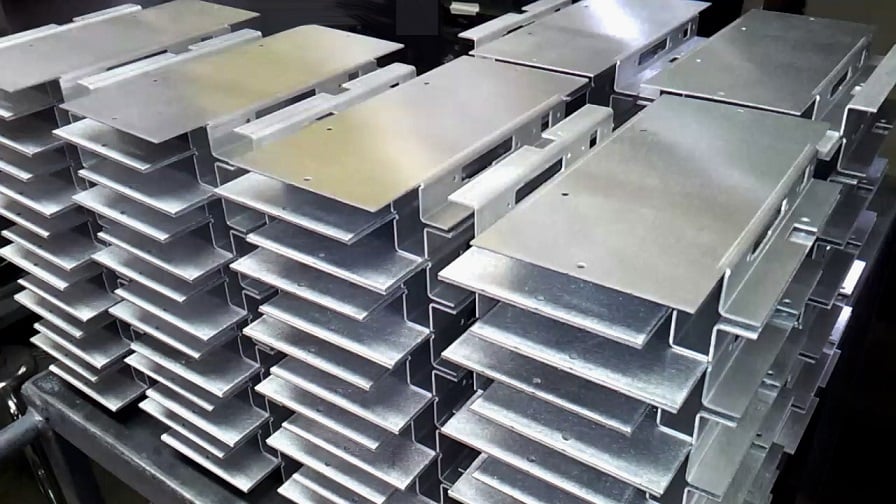
Sheet metal fabrication is the process of turning flat sheets of steel or aluminium into metal structures or products, by cutting, punching, folding, and assembling. The result finds its application in many home appliances, constructions, etc.
Pros: There are various advantages of using sheet metal including greater flexibility and availability of a wide range of surface finishes. With sheet metal, single prototypes to volume production are also possible.
Cons: The cons are high labour costs, although tooling and equipment costs vary depending on part size.
Read more: The Ultimate Guide to Prominent Global Architectural Movements and Styles
4. Aluminium
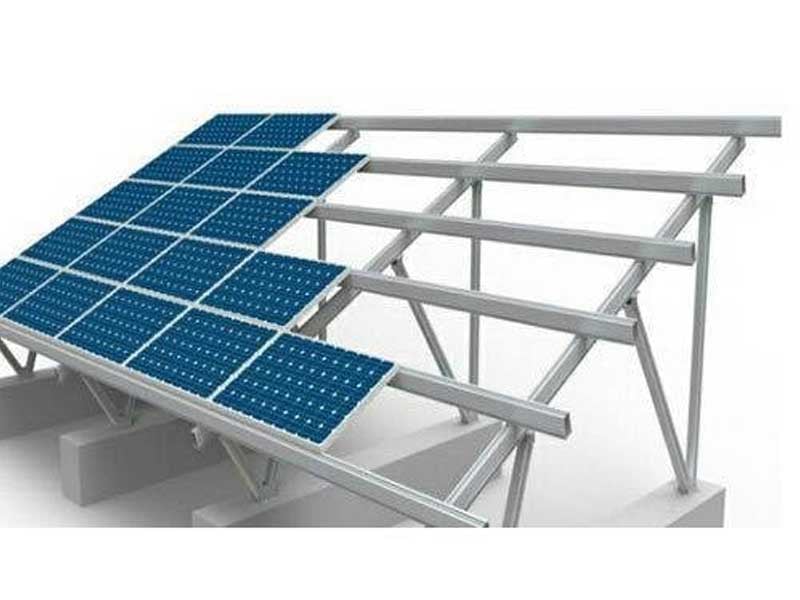 Aluminium fabrication in the construction and fabrication industry is used in various industries like aerospace, packaging, automotive applications, construction, and electronics. The material is used to shape finished products like solar panel parts and outdoor enclosures. The fabrication process includes steps like welding, stamping, bending, extruding, and shearing, to name a few.
Aluminium fabrication in the construction and fabrication industry is used in various industries like aerospace, packaging, automotive applications, construction, and electronics. The material is used to shape finished products like solar panel parts and outdoor enclosures. The fabrication process includes steps like welding, stamping, bending, extruding, and shearing, to name a few.
Pros: Due to its softness and lightness, aluminium is quick and easy to shape. The fabrication material is corrosion-resistant and recyclable. Its reflective and non-combustive properties have also cemented its place in lighting.
Cons: Although aluminium’s softness has advantages, it makes the material less sturdy for end products. Certain stresses can also cause aluminium to break, as it can be brittle in some ways.
5. Stainless Steel
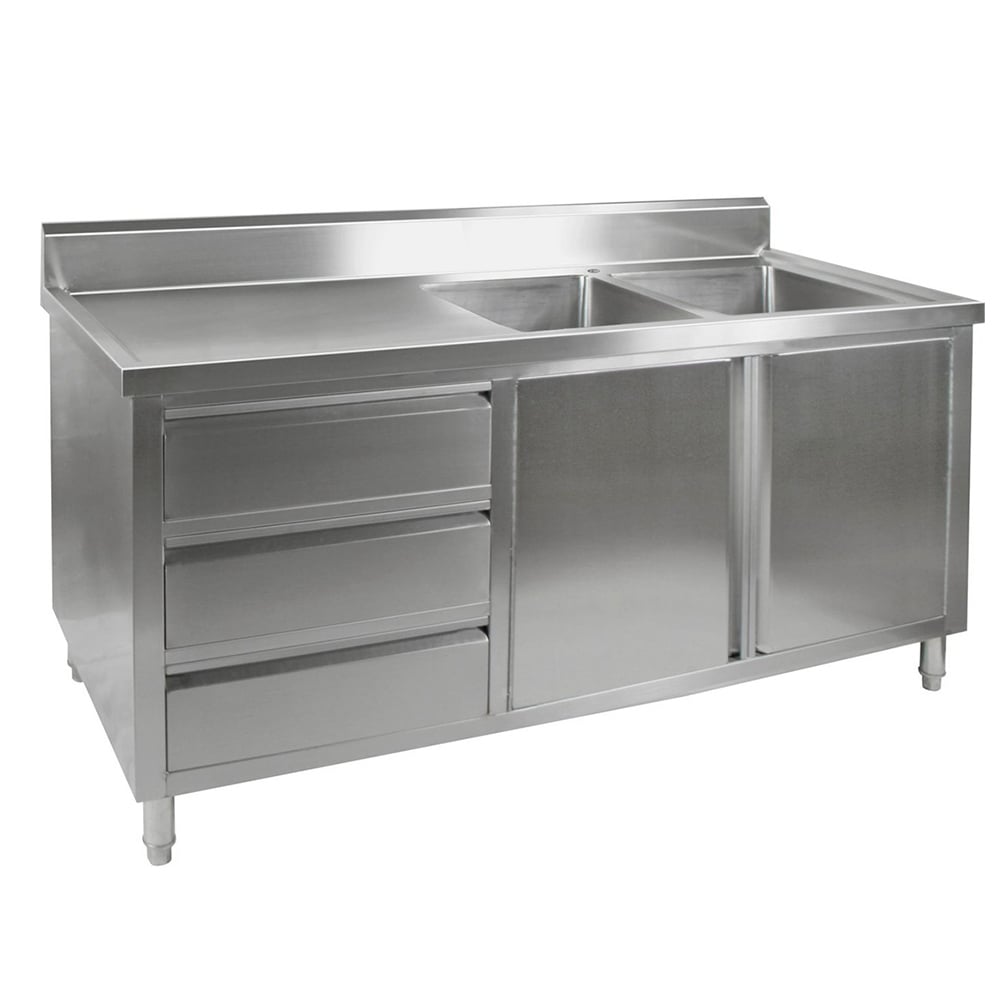
As opposed to ordinary steel, stainless steel has a glossy surface that is resistant to tarnish. That is also why it is referred to as “stainless.” It is produced by melting raw elements such as iron ore, nickel, silicon, chromium, and molybdenum. The material is extensively used in many industries such as power, transportation, construction, scientific studies, health care, food, and logistics.
Pros: This fabrication material is 100 per cent recyclable. It is also environmentally neutral and inert, and its longevity ensures it meets the needs of sustainable construction. On top of this, the material is also aesthetically pleasing, extremely hygienic, easy to maintain, highly durable, resistant to fire and heat, and versatile!
Cons: Stainless steel appliances tend to be more on the costlier side and require frequent maintenance.
6. Copper
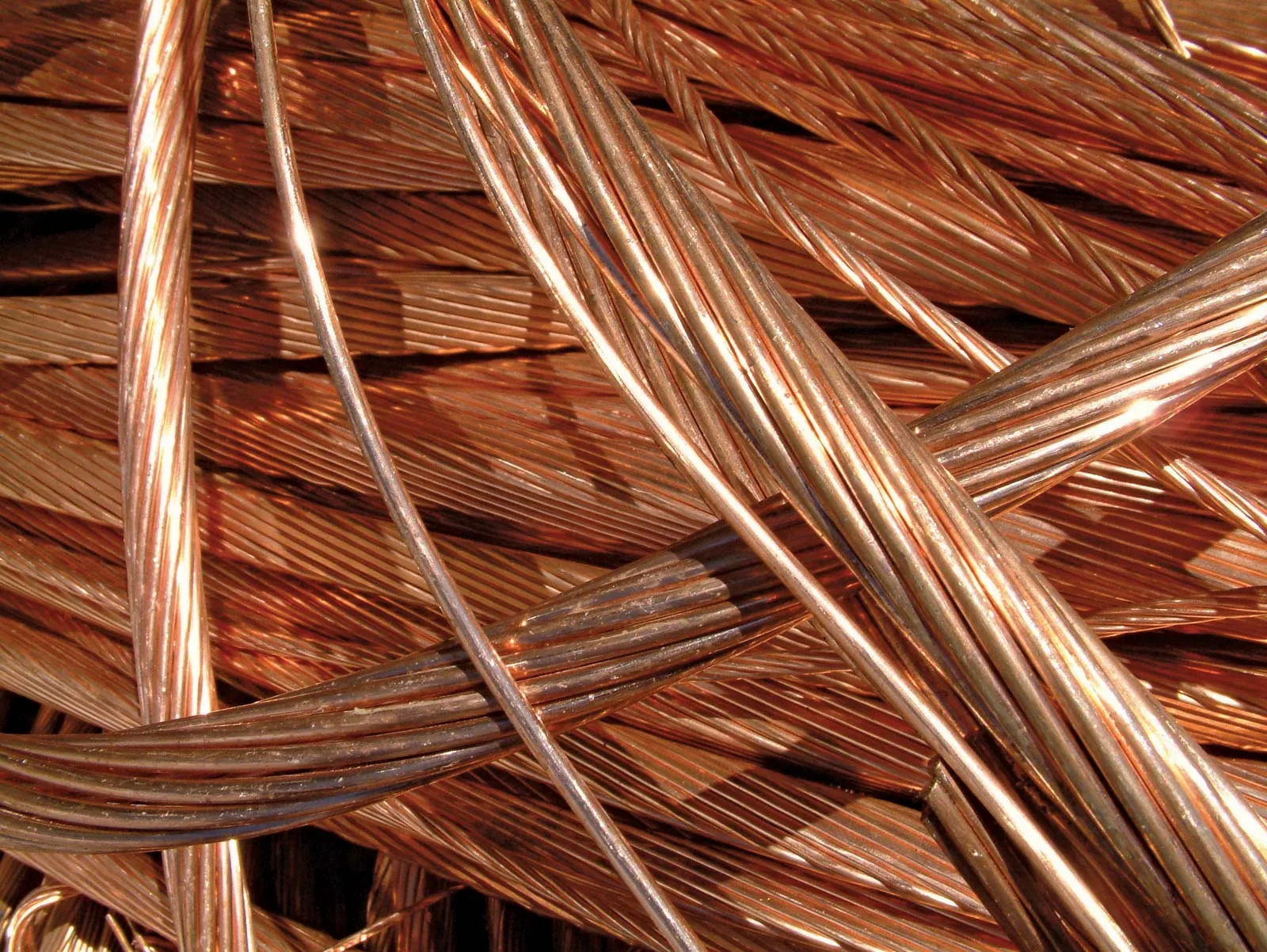
Some of the most effective uses of copper as fabrication material include gutters, roofing, electrical wiring for equipment, telecommunications cables, and renewable energy technology. The steps involved in the fabrication process include copper sheet metal rolling, copper sheet metal bending, and copper sheet metal stamping.
Pros: Copper is extremely malleable, conductive (making it good for electrical conduction), and corrosion-resistant. On top of that, the material is also economical as its easy handling, forming, and joining can reduce labour costs.
Cons: Over time, copper is seriously in danger of corrosion.
7. Bronze
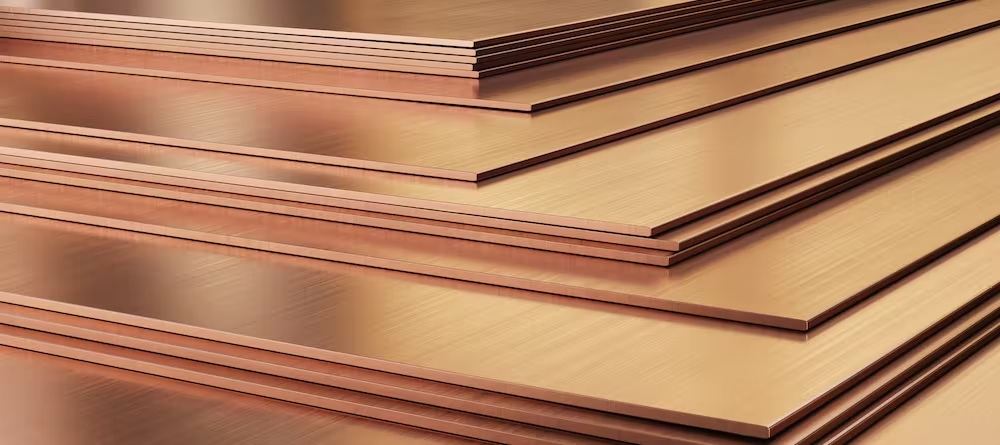
Bronze is a much stronger alloy of copper and is heavier than steel. Bronze’s versatility and range of different applications make it a tremendously popular metal for all types of projects. It is used in the making of ceiling and wall panels, ship hardware, furniture trim, automobile parts, and even sculptures. The fabrication material also finds its use in architecture and helps build structures that stand the test of time and preserve their original and natural look.
Pros: Benefits of using bronze include cost-effectiveness, excellent surface finishes, high dimensional precision, high thermal conductivity, resistance to corrosion, etc.
Cons: Bronze is softer, weaker and more expensive than steel.
8. Thermoplastics
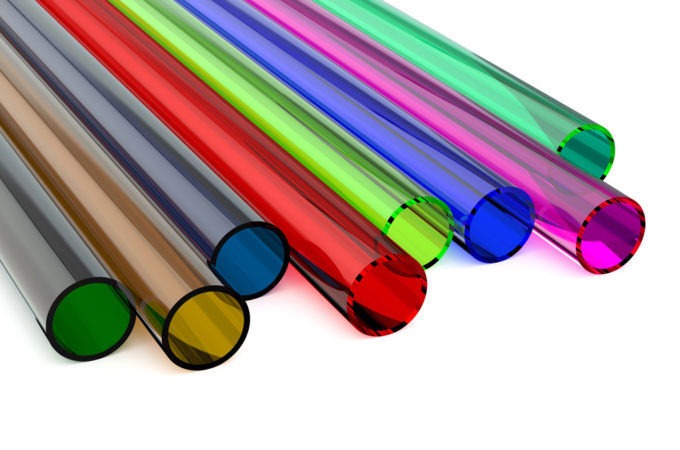
Plastic fabrications are the new steel fabrications these days. They are used to fabricate vessels and tanks for chemical storage, pipelines, spray booths, plastic skis, ductwork, feed troughs and silos, etc. The final product results from a rigorous process of design, polymer product selection, manufacturing quality assurance of the primary product, welding techniques, method statement, risk assessment, construction quality assurance, selection criteria of welding technicians, and proof of their competency to predefined standards.
Pros: Benefits of using thermoplastics include its recyclability, versatility, fast fabrication, and cost-effectiveness.
Cons: The biggest disadvantage of using thermoplastics as a fabrication material is that they can melt at high temperatures.
Read more: Landscape Architecture: Definitions, Types, Elements & More
9. Wood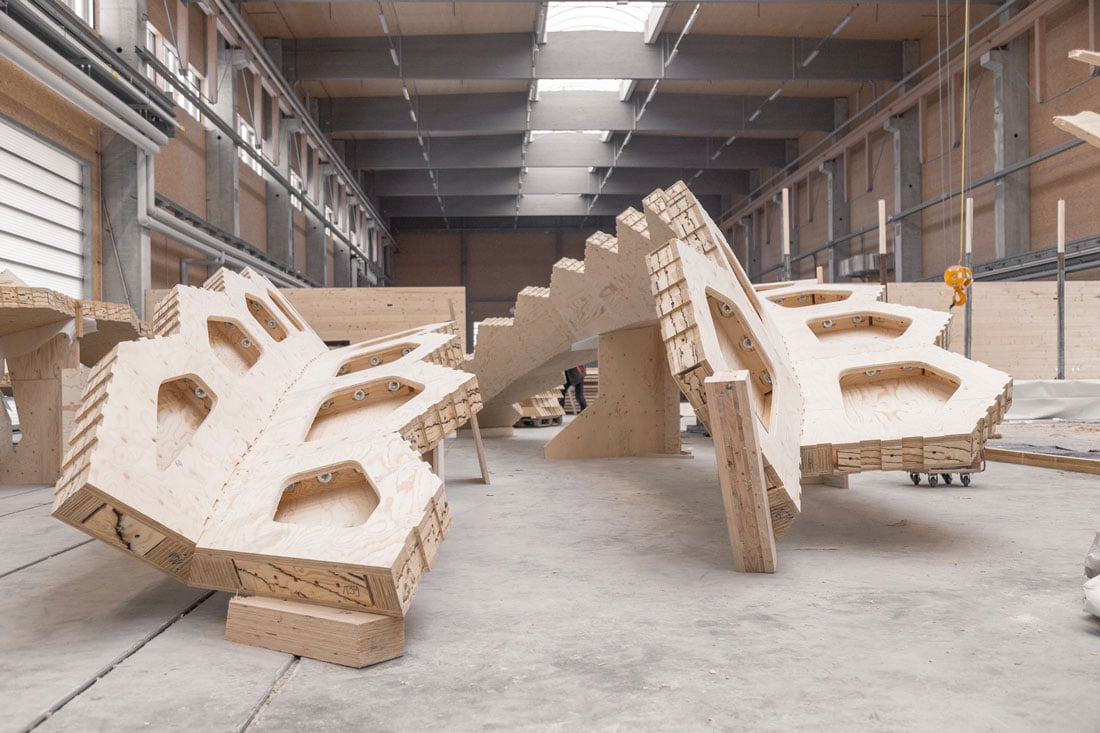
The technique of fabricating wood is almost similar in principle to that of metal. The processes involved in the fabrication of wood include head rig, edging, trimming, rough lumber sorting, stickering, drying, planning, and grading. A fabricated wood panel with its plain features can be made into various types of objects. The resulting products have found a broad range of commercial uses including speaker manufacturing, furniture, shipping pallets, shipping containers, etc.
Pros: The major pros of using wood as a fabrication material include its ability to create precise and accurate forms and its cost-effectiveness.
Cons: Manual wood fabrication uses up a lot of labour, and this can be one of its disadvantages. Another one would be its poor dimensional stability compared to more rigid materials.
10. Silicones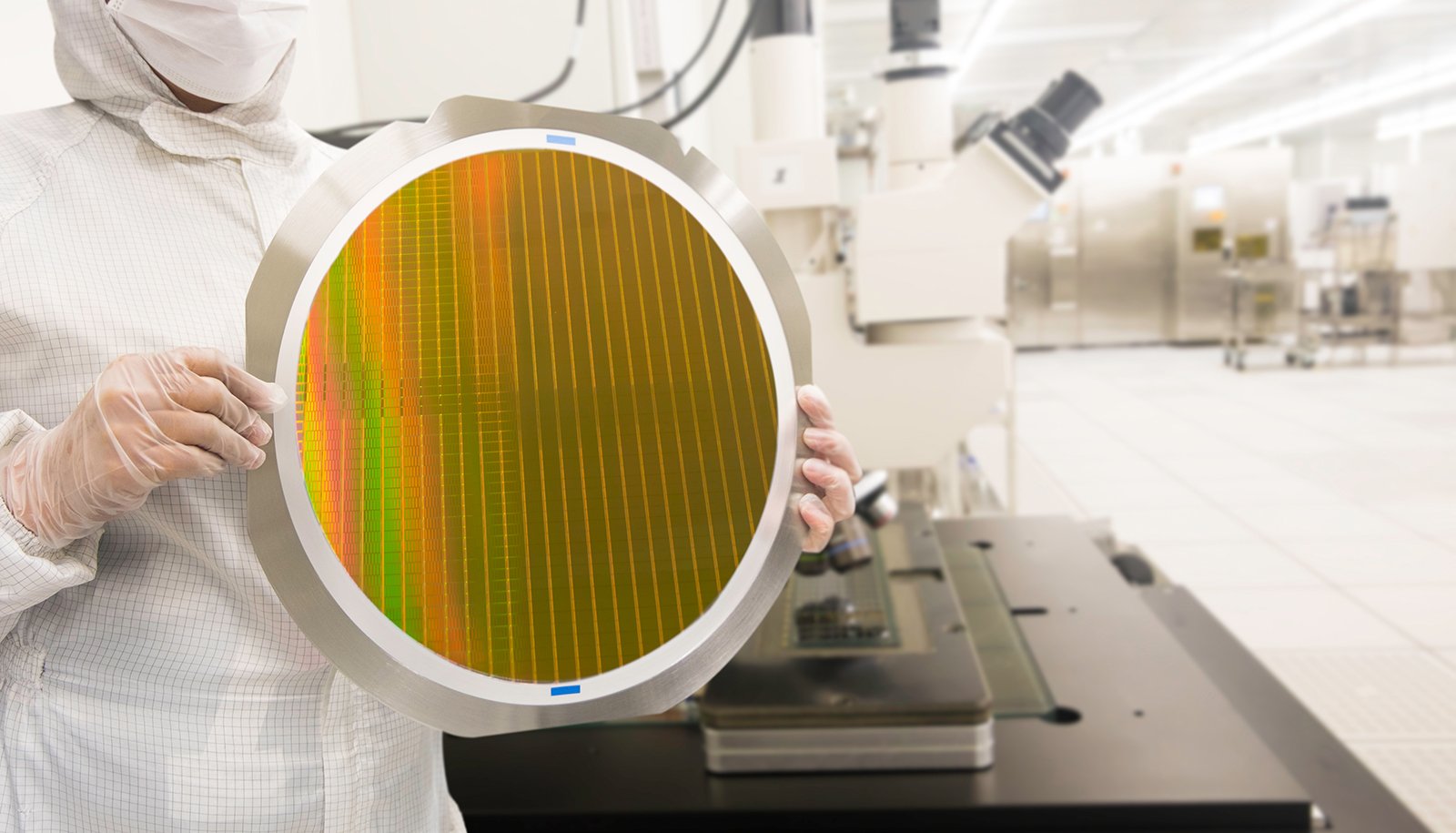
Silicon fabrication can be made into various types of objects. The resulting products have found a broad range of commercial uses including moulds, weather seals, high-temperature hoses, O-rings, and dust covers.
Pros: The major pros of using it would be its versatility, multiple hardness levels, and ability to hold its shape under many conditions. Apart from this, it is also waterproof and temperature resistant.
Cons: The only disadvantage would be that the soft elastomers can leave a tacky finish.
I hope this blog gave you the insight you needed to accelerate your career in the Architecture, Engineering, and Construction (AEC) Industry.
To get more information about the construction industry and its trends, along with the most in-demand AEC skill used for digital fabrication - Building Information Modelling, head over to Novatr’s Computational Design Course. Go to our Resources page if you want to get more insights on AEC careers, software & tools, and industry trends.

 Thanks for connecting!
Thanks for connecting!

%20(2).png)
%20(1).png?width=767&height=168&name=BIM-A%20A%20(Course%20Banner)%20(1).png)
%20(1).jpg)
.png)

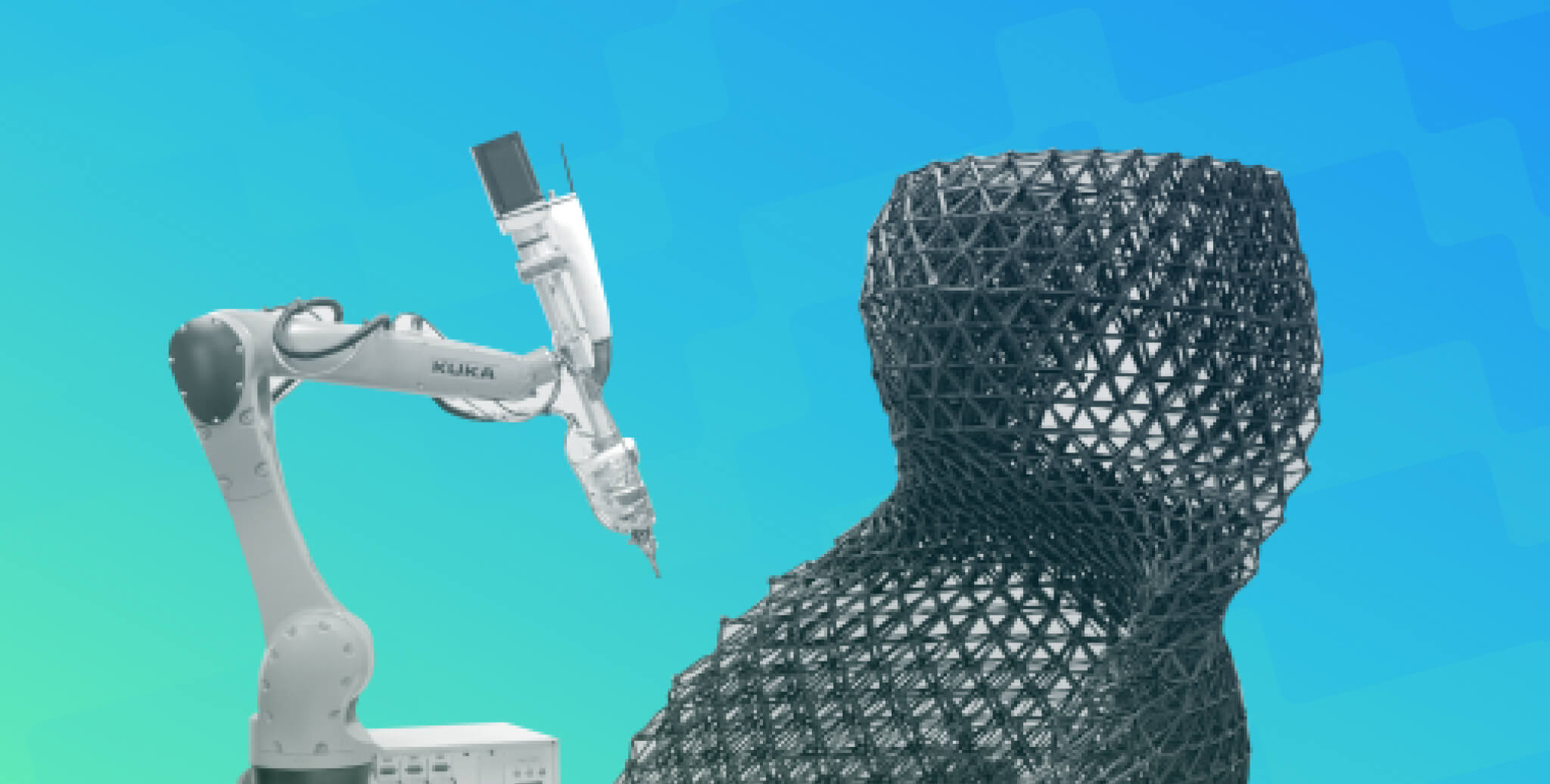

-1.png)
